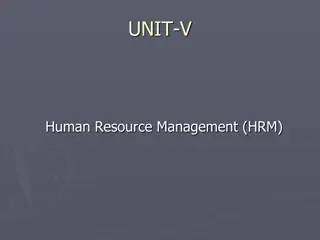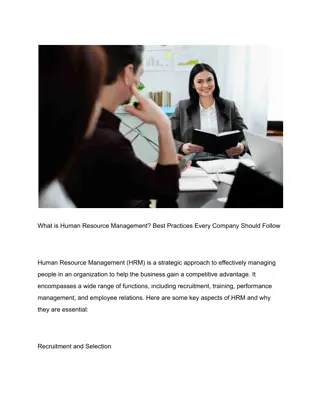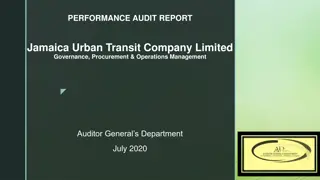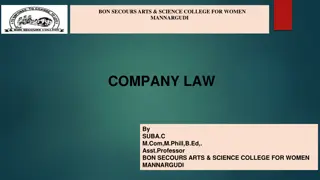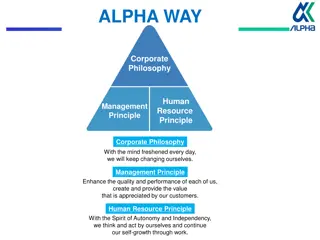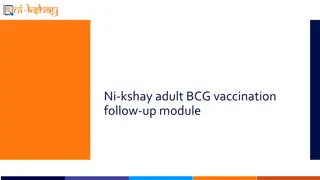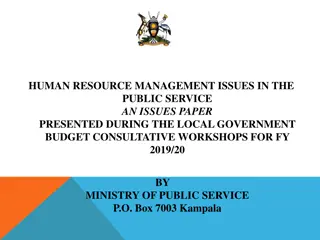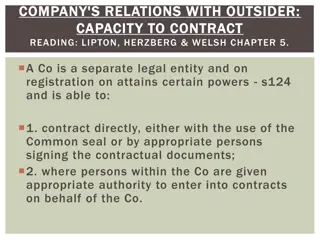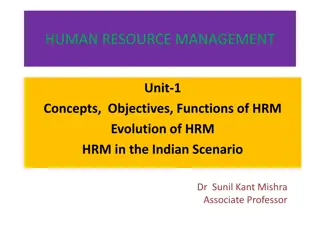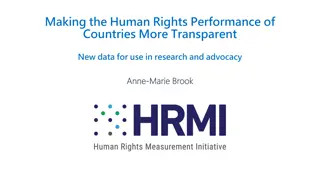
What is Human Resource Management Best Practices Every Company Should Follow
What is Human Resource Management? Best Practices Every Company Should Follow u2013 Human Resource Management (HRM) plays a crucial role in shaping a company's workforce, driving productivity, and ensuring long-term success. Companies that effective
Download Presentation

Please find below an Image/Link to download the presentation.
The content on the website is provided AS IS for your information and personal use only. It may not be sold, licensed, or shared on other websites without obtaining consent from the author. If you encounter any issues during the download, it is possible that the publisher has removed the file from their server.
You are allowed to download the files provided on this website for personal or commercial use, subject to the condition that they are used lawfully. All files are the property of their respective owners.
The content on the website is provided AS IS for your information and personal use only. It may not be sold, licensed, or shared on other websites without obtaining consent from the author.
E N D
Presentation Transcript
What is Human Resource Management? Best Practices Every Company Should Follow
Human Resource Management (HRM) is a strategic approach to managing people effectively for optimal business performance. It includes many different tasks, such as: Recruitment and Selection: Identifying staffing needs, attracting candidates, and choosing the best fit for the organization. Training and Development: Facilitating employee growth through continuous learning and skill enhancement. Performance Management: Establishing performance standards, providing feedback, and conducting evaluations. Compensation and Benefits: creating benefits packages and compensation systems that are competitive. Compliance: ensuring compliance with moral business conduct and labor regulations. Employee Relations: Addressing grievances, fostering a positive work culture, and promoting employee engagement. The Importance of Human Resource Management Human Resource Management (HRM) is vital for organizational success. It ensures optimized employee performance. Human Resource Management makes the hiring, training, and retention procedures easier. Recruitment and Selection: Human Resource Management identifies and attracts talent. Training and Development: Human Resource Management offers prospects for advancement and essential abilities. Employee Retention: Human Resource Management creates strategies to maintain a satisfied workforce.
HRM also handles employee relations, ensuring a harmonious work environment. Effective HRM supports compliance with labor laws, preventing legal issues. HRM aligns the workforce with strategic goals, enhancing productivity. This alignment drives competitive advantage and fosters innovation. Core Functions of HRM Human Resource Management involves several core functions essential for organizational success. 1. Recruitment and Selection Identifying vacancies Attracting candidates Selecting the best fit 2. Training and Development Employee onboarding Skills training Leadership development 3. Performance Management Setting performance expectations Conducting performance appraisals Providing feedback 4. Compensation and Benefits Developing pay structures Managing employee benefits Ensuring competitive compensation 5. Employee Relations Addressing grievances Ensuring compliance with labor laws Fostering a positive work environment
These functions are interconnected and contribute to achieving organizational goals. Recruitment and Selection Strategies Effective recruitment and selection strategies are critical for acquiring top talent. Organizations should: 1. Define Clear Job Descriptions: Develop precise and detailed job descriptions to attract suitable candidates. 2. Utilize Multiple Recruitment Channels: Leverage job boards, social media, employee referrals, and recruitment agencies. 3. Implement Structured Interviews: Use consistent criteria and questions to ensure fairness and objectivity. 4. Assess Cultural Fit: Evaluate whether candidates align with the organization s values and culture. 5. Conduct Comprehensive Background Checks: Verify qualifications, work history, and references to ensure credibility. 6. Offer Competitive Compensation Packages: Attract high-caliber talent by offering appealing salaries, benefits, and growth opportunities. Effective Onboarding Practices Effective onboarding is crucial for integrating new hires into the company culture and operations smoothly. Key practices include: 1. Structured Orientation Program: A planned program provides an overview of the company s mission, values, and procedures. 2. Mentorship Systems: Pairing new employees with seasoned mentors facilitates a supportive learning environment. 3. Clear Documentation: Comprehensive guides and resources help new hires understand their roles and responsibilities. 4. Regular Check-Ins: Scheduled meetings encourage feedback and address any issues early on.
5. Engagement Activities: Social events and team-building exercises promote camaraderie and collaboration among staff. Performance Management Systems Performance management systems are vital for evaluating and improving employee performance. They include: Goal Setting: Establishing clear, measurable, and attainable objectives for employees. Continuous Feedback: delivering frequent, helpful feedback to direct staff growth. Performance Appraisals: Conducting formal assessments to review employee progress and achievements. Development Plans: Creating tailored plans for professional growth and skill enhancement. Recognition Programs: Implementing programs to reward exceptional performance and motivate employees. Data Analysis: Utilizing metrics and analytics to inform decisions and track performance trends. Legal Compliance: Ensuring that performance management processes comply with labor laws and regulations. Employee Development and Training Training and development for employees are crucial for producing a staff that is knowledgeable and flexible. Human Resource Management should: 1. Identify Needs: Conduct regular assessments to determine skill gaps and training needs. 2. Customized Training Programs: Create programs based on the requirements of the group or the individual. 3. Use Technology: Leverage e-learning platforms and online courses. 4. Mentorship and Coaching: Put mentoring programs into action to share knowledge.
5. Regular Performance Reviews: Use appraisals to pinpoint areas for improvement. 6. Encourage Continuous Learning: Offer incentives for ongoing education and skill development. These practices enhance productivity, job satisfaction, and retention rates, ensuring the company s long-term success. Compensation and Benefits Management Compensation and benefits management is crucial in attracting and retaining talent. Employees need to feel valued and fairly compensated. Effective management includes: Analyzing Job Roles: Ensuring the alignment of job roles with compensation. Salary Surveys: Conducting market research to remain competitive. Designing Benefits Packages: Including healthcare, retirement plans, and other perks. Performance-Based Incentives: Implementing bonus structures and merit-based raises. Legal Compliance: Adhering to labor laws and regulations. Continuous Evaluation: Regularly reviewing and adjusting compensation structures. Human resource management must balance competitive pay and benefits to maintain a motivated, productive workforce. Consistent evaluation ensures ongoing alignment with organizational goals. Employee Engagement and Retention Employee engagement and retention are vital in achieving organizational success. Maximizing these aspects involves:
1. Regular Feedback: Implementing consistent performance reviews and feedback mechanisms. 2. Recognition Programs: Establishing systems to acknowledge and reward employees accomplishments. 3. Career Development: Providing opportunities for professional growth through training, mentoring, and clear career paths. 4. Work-Life Balance: Promoting a healthy balance by offering flexible scheduling and remote work options. 5. Inclusive Culture: Fostering an environment where diversity is valued, and all employees feel included. 6. Health and Wellness: Investing in programs that support employees physical and mental health. Diversity and Inclusion Initiatives Human Resource Management (HRM) must actively promote diversity and inclusion within the workplace. Some key initiatives include: Implementing Bias Training: Equip employees with the knowledge to recognize and counteract their biases. Creating Inclusive Hiring Practices: Make sure that interview panels and job advertising draw a wide range of candidates. Establishing Employee Resource Groups (ERGs): Create affinity clubs to assist employees who are underrepresented. Promoting Equal Opportunities: Ensure career advancement opportunities are available to all employees. Regularly Reviewing Policies: Review and update policies often to encourage inclusive behavior. Encouraging Open Communication: Create a setting where staff members feel comfortable sharing their thoughts and worries. Workplace Health and Safety Creating a safe workplace is a critical component of Human Resource Management. HR must:
Develop and enforce safety protocols. Conduct regular safety training and drills. Keep an eye on adherence to regional and national safety laws. Implement ergonomic solutions to reduce physical strain. Establish emergency response procedures. Regularly inspect equipment and facilities for hazards. Encourage staff members to have a culture of safety awareness. HR should also ensure that all incidents are thoroughly investigated and that corrective actions are taken promptly. Prioritizing health and safety not only protects employees but also enhances productivity and morale. Employee Relations and Communication Effective HRM ensures robust employee relations and open communication channels. Regular Feedback: Implement structured feedback systems to motivate employees. Conflict Resolution: Develop clear protocols for addressing workplace conflicts. Engagement Programs: Organize activities to foster a sense of community and belonging. Training and Development: Provide opportunities for continuous professional growth. Transparent Policies: Ensure all policies are accessible and understandable. Open-door Policy: Encourage employees to freely express their concerns and suggestions. Surveys and Feedback: Regularly collect and analyze employee feedback to improve organizational practices.
Legal Compliance in HRM Legal compliance in Human Resource Management (HRM) is critical. It ensures companies adhere to labor laws and regulations, safeguarding against legal disputes. Key areas include: Employment Laws: Observing the minimum wage, working hours, and anti-discrimination rules. Health and Safety: Ensuring workplace safety complies with OSHA standards. Data Protection: Safeguarding employees personal information under GDPR or relevant data protection laws. Employee Rights: Respecting rights related to union memberships, fair treatment, and privacy. Training: Regularly updating HR staff on the latest legal requirements. These procedures support upholding moral and legal requirements in the field of human resources. Technology and HRM: Transformative Tools In the realm of Human Resource Management, technology acts as a game-changer, simplifying processes and enhancing efficiency. Businesses may use several innovative technologies to expedite HR procedures, including: HR Management Systems (HRMS): Automate employee data, benefits, and payment.. Applicant Tracking Systems (ATS): Manage recruitment processes efficiently. Learning Management Systems (LMS): Encourage the training and growth of your staff.
Employee Self-Service Portals: Allow employees to access and manage their information. Performance Management Software: Monitor and assess worker performance instantly. These tools empower HR teams to focus on strategic initiatives, thus driving overall organizational growth. Best Practices for Small and Medium Enterprises Small and Medium Enterprises (SMEs) can benefit immensely from implementing effective HR practices. Key strategies include: Streamlined Recruitment: Utilize online job portals and social media for cost-effective hiring. Employee Development: Offer regular training programs to enhance skills and productivity. Flexible Work Arrangements: Provide options like remote work to attract and retain talent. Performance Management: Establish clear goals and regular feedback systems. Cost-effective Benefits: Offer non-monetary perks such as flexible hours and professional growth opportunities. Compliance: Ensure adherence to local labor laws and regulations to avoid legal issues. Open Communication: Maintain transparent communication channels between employees and management. Global HRM: Managing a Diverse Workforce
Effectively managing a global and diverse workforce is critical for modern HR departments. Global HRM practices must address cultural differences, legal compliance, and varied employee expectations. 1. Cultural Sensitivity: Understand and respect cultural differences to foster an inclusive environment. 2. Compliance: Ensure adherence to labor laws and regulations in different countries. 3. Communication: Develop clear communication strategies that account for language barriers. 4. Training: Offer diversity and cross-cultural training programs. 5. Talent Management: Adapt talent acquisition and retention strategies to local markets. These steps are vital for leveraging workforce diversity and ensuring global operational efficiency. Future Trends in Human Resource Management Human Resource Management (HRM) is evolving rapidly. Key trends to watch include: AI and Automation: Automating routine tasks enhances productivity. Data-Driven Decision Making: HR analytics refine recruitment and retention. Remote Work: Policies supporting flexible work environments become essential. Employee Well-being: Mental and physical wellness programs gain priority. Diversity and Inclusion: Creating inclusive workplaces boosts innovation. Learning and Development: Continuous skill development stays in focus.
Technological Integration: HR tech integration streamlines workflows. Personalized Employee Experiences: Tailored HR practices improve engagement. These trends shape the future of HRM, underscoring the need for adaptive strategies. Achieving Excellence in HRM To achieve excellence in Human Resource Management, companies must implement best practices consistently. Effective HRM involves: Recruitment and Selection: Attracting top talent through strategic planning. Training and Development: Providing continuous learning opportunities. Performance Management: Setting clear goals and conducting regular reviews. Employee Relations: Fostering a supportive workplace culture. Compliance: Adhering to labor laws and regulations thoroughly. Investing in technology, such as HRM software, can streamline these processes. Additionally, promoting diversity and inclusion enriches the workforce. These strategies ensure that HRM contributes significantly to the organization s success and sustainability.



